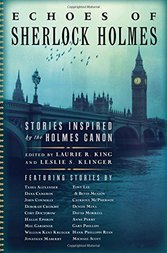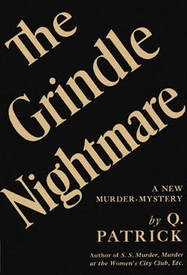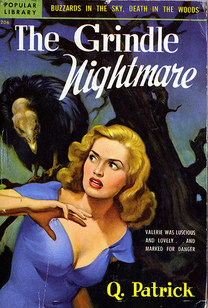
So I come to Echoes of Sherlock Holmes, an anthology of new work by writers inspired by Conan Doyle’s stories, as a fan but far from an apostle. I want to make the distinction because it naturally colors my reaction to the seventeen tales collected here. The most successful stories for me were not the ones that required intimate knowledge of the characters and situations of the original adventures – indeed, there are still a fair number of Holmes adventures that I have never managed to read – but the ones that used Conan Doyle’s storytelling to explore new terrain.
Clear standouts include “Irregular” by Meg Gardiner, who uses the concept of the Baker Street Irregulars, Holmes’s network of information-gathering street children, to create a wise and tough young woman named Shaz as she investigates a suspicious suicide in the form of a high-rise fall. Veteran novelist Anne Perry delivers a solid suspense tale with “Raffa”, where a little girl whose mother has been kidnapped appeals to a very ordinary actor for help, and all because he has portrayed Sherlock Holmes on a television program. “Limited Resources” by Denise Mina is also memorable in approach and tone, as a Watson surrogate narrates a story of the murder of obnoxious tourists on a remote Scottish island; here, the observant, reclusive detective is islander Sherry, and the invasion of others into the necessarily close-knit community is well-rendered.
In each of the examples above, the author has chosen to present a new story that is not reliant on great knowledge of the Holmes stories and world. Others, I feel, only become complete when the reader makes the active connection between original source material and new text. For many avid fans of the 221b Baker Street consulting detective, I am certain that such a link is an enticing prospect, and another puzzle to be solved. But I prefer to approach each story on its own terms, and in that regard, perhaps I’m not the ideal audience for the collection.
While I enjoyed John Connelly’s thoughtful “Holmes on the Range”, which used the fantastical notion of a sort of library/retirement home for fictional characters to address the dip in quality between early and late Holmes stories, others fared less well. Dana Cameron’s “Where There is Honey” re-imagines John Watson as a blood-thirsty brawler, with Holmes a kindred carnalist, and it (along with the rather purple prose; one hardly expects Watson to write “Razors seemed to fill my eye sockets”) makes for an uneasy combination of tones. As characters, Watson and Holmes would have also been better off abstaining from the adventure of “Martin X,” and writer Gary Phillips could have recruited other investigators with less iconic ties to look into the locked-room shooting of a controversial professor and black power leader.
Other stories here had some fine merits, while others left me wanting a little more. Michael Scott delivers an intriguing protagonist as a hyper-observant brothel madam looks into “The Crown Jewel Affair”, but the case is solved almost as soon as it starts, with Madam Kitten gathering her evidence and making her deductions offstage. “The Adventure of the Empty Grave” by Jonathan Maberry is more satisfying, and it is the only entry in the collection that attempts to imitate Conan Doyle’s original narrative style. Here, Watson grieves for his friend Holmes after the events at Reichenbach Falls, only to be confronted by a surprising graveside visitor. I found this story more successful than Cory Doctorow’s “The Adventure of the Extraordinary Rendition,” which mires Holmes and Watson in the 21st century quicksand of technological surveillance and governmental abuse of power. It’s an odd final story, and one which almost argues that we have lost the time when deductive reasoning and acute observation can be valued as tools for truth.
Echoes of Sherlock Holmes, edited by Laurie R. King and Leslie S. Klinger, is available now; it is a readable but variable mix of homages to Sherlock Holmes and the man who created him. Sincere thanks to NetGalley and the publishers at Pegasus Books for offering an advance eBook copy of this title in exchange for an honest review.


 RSS Feed
RSS Feed